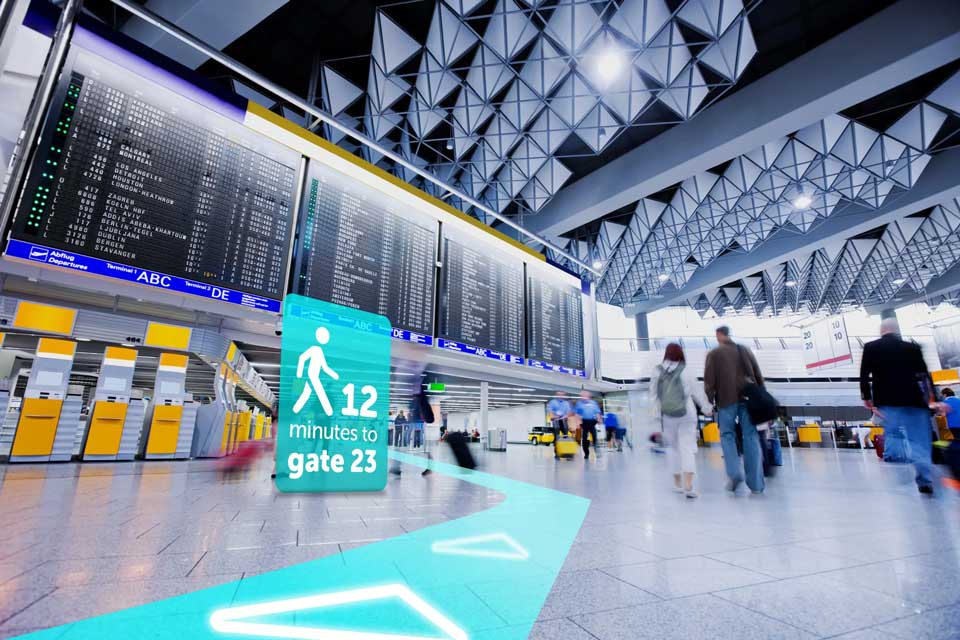Indoor navigation using Augmented Reality (AR) represents a transformative approach to wayfinding within buildings and complex environments. By overlaying digital information—such as directional arrows, points of interest, and detailed instructions—onto the real-world view through smartphones, tablets, or AR glasses, users can navigate indoor spaces more intuitively and efficiently. This technology integrates with a building’s infrastructure and uses various data inputs, including Wi-Fi, Bluetooth beacons, and visual markers, to provide accurate and real-time navigation assistance.
Applications of AR in Indoor Navigation
AR-based indoor navigation finds its utility in numerous settings, enhancing the way individuals interact with indoor environments:
Retail and Shopping Malls: In large shopping centers, AR can guide customers to their desired stores or amenities, offer information about ongoing sales, or suggest products based on their preferences. This not only improves the shopping experience but also benefits retailers through increased engagement and sales opportunities.
Airports and Transportation Hubs: Navigating through large, crowded airports can be daunting. AR navigation helps passengers find their way to check-in counters, departure gates, or baggage claim areas efficiently, reducing stress and improving passenger flow.
Museums and Exhibitions: AR can enrich the visitor experience by providing interactive guides, displaying information about exhibits, or offering immersive storytelling related to the artifacts, all while guiding visitors through the venue.
Hospitals and Healthcare Facilities: In complex healthcare environments, AR navigation aids patients and visitors in finding their way to specific departments, consultation rooms, or amenities, minimizing confusion and missed appointments.
Corporate and Educational Campuses: Large corporate or university campuses can utilize AR for helping new employees, students, and visitors navigate through various buildings and facilities, enhancing accessibility and reducing the time spent searching for locations.
Advantages of AR in Indoor Navigation
Enhanced User Experience: AR makes indoor navigation more interactive and user-friendly, significantly improving the experience of navigating through complex indoor spaces.
Increased Efficiency: By providing real-time, visual navigation cues, AR helps users reach their destinations more quickly and efficiently, reducing the time spent lost or seeking directions.
Accessibility: AR navigation is particularly beneficial for individuals with disabilities, offering visual and auditory cues that improve accessibility within indoor environments.
Engagement and Interaction: For retail and exhibition spaces, AR navigation can include interactive elements that engage users, offering information, promotions, and immersive experiences related to their surroundings.
Safety: In emergency situations, AR can provide visual guidance for evacuation routes and safety procedures, enhancing the effectiveness of emergency response efforts.
Implementation Challenges and Considerations
While AR indoor navigation offers numerous benefits, its implementation comes with challenges, including the need for precise indoor positioning systems, integration with existing infrastructure, and ensuring user privacy and data security. Additionally, the effectiveness of AR navigation depends on the quality and accuracy of the digital content and the usability of the application.
Conclusion
Augmented Reality is revolutionizing indoor navigation, offering a more intuitive, efficient, and engaging way to navigate through complex indoor spaces. As the technology advances and becomes more integrated into our daily lives, AR indoor navigation is poised to become a standard feature in many public and private venues, transforming how we interact with and move through indoor environments.
